#funan kingdom
Explore tagged Tumblr posts
Text

Go Thap archaeological site
3 notes
·
View notes
Text
Banteay Chhmar, Phnom Chisor, Phnom Da: Cambodia's Next World Heritage Bids
Cambodia preps Banteay Chhmar, Phnom Chisor, Phnom Da temples for UNESCO World Heritage listing, highlighting cultural preservation efforts.
via Khmer Times, 26 January 2024: Cambodia is preparing to nominate the ancient temples of Banteay Chhmar, Phnom Chisor, and Phnom Da for UNESCO World Heritage listing. The Ministry of Culture and Fine Arts, led by Minister Phoeurng Sackona, is spearheading this initiative, emphasizing the importance of preserving and promoting national cultural heritage. The targeted temples, spanning from the…

View On WordPress
#Angkor (kingdom)#Banteay Chhmar (temple)#Funan (kingdom)#Ministry of Culture and Fine Arts (Cambodia)#Phnom Chisor#Phnom Da (site)#Phoeurng Sackona (person)#Unesco nomination
0 notes
Text
The divine blend of spices needed to make curry first reached Southeast Asia about 2,000 years ago, when the region began trading with the Indian subcontinent, according to an analysis of ancient spice residue.
The new project analyzed 12 different spice grinding tools unearthed at the ancient trading port of Oc Eo, in modern-day Vietnam, by washing them with water and chemicals. This produced hundreds of tiny fragments that the researchers painstakingly identified (to a reasonable degree of certitude) under a microscope. The results sounded like a shopping list for making curry: turmeric, ginger, fingerroot, sand ginger, galangal, clove, nutmeg and cinnamon.
“These spices are indispensable ingredients used in the making of curry in South Asia today,” the paper says.
Ancient Trading Spices
Where did all these spices comes from?
They could have come from the surrounding countryside. Farmers in Southeast Asia made many of these crops themselves, and if not, they could have imported the seeds and gotten started.
On the other hand, the turmeric could have easily come from India, where use of the spice dates back thousands of years. And the ginger and cloves may have come from India as well, or maybe China.
Cinnamon was widely traded at the time and may have come all the way from Israel.
The galangal, fingerroot and sand ginger are native to Southeast Asia and could easily have come from nearby soils. These more specialized spices are still used in the region’s curry paste.
Footed Grinding Slabs
As a testament to the spice trade’s popularity, the spice grinders made up the majority of the stone tools recovered from Oc Eo and another, nearby city called Angkor Borei. The original archaeological dig at Oc Eo found numerous footed grinding slabs, which look like little stone workbenches for grinding spices – which is what they likely were. Versions of these slabs are still sometimes used in the traditional preparation of curry.
The largest slab recovered measured 2.5 feet by 1 foot. Researchers found it buried not far from a piece of charcoal that dated to about A.D. 250, which hinted at when curry first made its way to the area.
Oc Eo
At that time, the city would have been not just importing and exporting goods but making them as well, according to the paper. Residents raised religious monuments and shaped metal tools, glass jewelry and pottery.
All the while, they would have worked to trade and process many different spices. Archaeologists working there even found an intact nut that dated to about A.D. 200, and it still “yielded a nutmeg aroma,” the paper says.
Now part of Vietnam, Oc Eo once belonged to the ancient kingdom of Funan, which maintained a base of power further up the Mekong River.
In Oc Eo, culture prospered between the first and eighth centuries, during the latter years of the Iron Age. As the site’s ancient canals filled with ships, Buddhism and Hinduism left their own marks on the sprawling complex, including a possible contribution to curry cooking. The need to dye the Buddhist monks’ robes yellow may have first prompted Oc Eo to import turmeric, the paper says.
78 notes
·
View notes
Text

Queen Soma was the legendary ruler of the Kingdom of Funan, widely claimed to be the first monarch of Cambodia sometime around the 1st century.
As this statue represents, she and her people were part cobra. They are known as the Naga.
3 notes
·
View notes
Text
Nagas, the mythical creatures
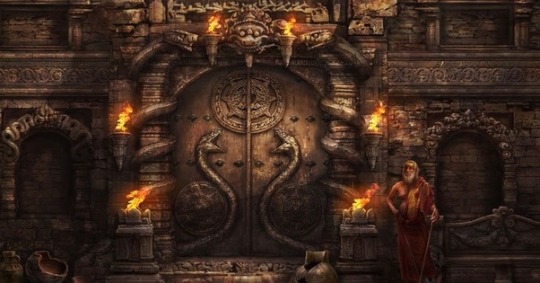
The Nagas
The Nagas, mythical creatures from Hinduism, Buddhism, and Jainism, are half-human and half-cobra beings that can be both a threat and a boon to humans. Their name means 'serpent' in Sanskrit, and they reside in Pata-loka or Naga-loka, an underground kingdom adorned with exquisite jewels and stunning palaces. According to legend, Brahma, their creator, sent them underground when they overpopulated the Earth. They only emerge to bite those who are genuinely evil or fated to die prematurely.
The Nagas were a group of people living during the period of the Mahabharata, an epic from India, and were spread across the country. They had a fierce rivalry with the demigod tribes known as Suparnas. The Naga clans in Kerala and Kashmir were believed to be the original and indigenous abode of all Nagas, and cities like Thiruvananthapuram in Kerala and Anantnag in Kashmir stand as testaments to this. In Hinduism, Jainism, and Buddhism, Nagas can take any shape, but they mostly appear as human beings. They are demigods associated with water and treasure. Lord Shiva, the most powerful god in the Hindu pantheon, wears a garland, anklets, and armlets made of snakes.

Snakes also serve to decorate and protect the gods Bhairav and Mahakala. Ananta, the thousand-headed Naga, protects Kali, the Hindu goddess of destruction. In Hindu myths, Nagas defend the gods and even serve as their resting place. Nagas also safeguard doors, windows, and temple walls, making their carvings and sculptures a common sight in Hindu temples. Female Nagas, referred to as Nagis or Naginis, belong to serpent royalty and are renowned for their breathtaking beauty. They hail from dynasties, including Manipur in northeastern India, Pallavas in southern India, and Indochina's ancient ruling Funan family. The Hindu canon contains several references to beings from other planets.
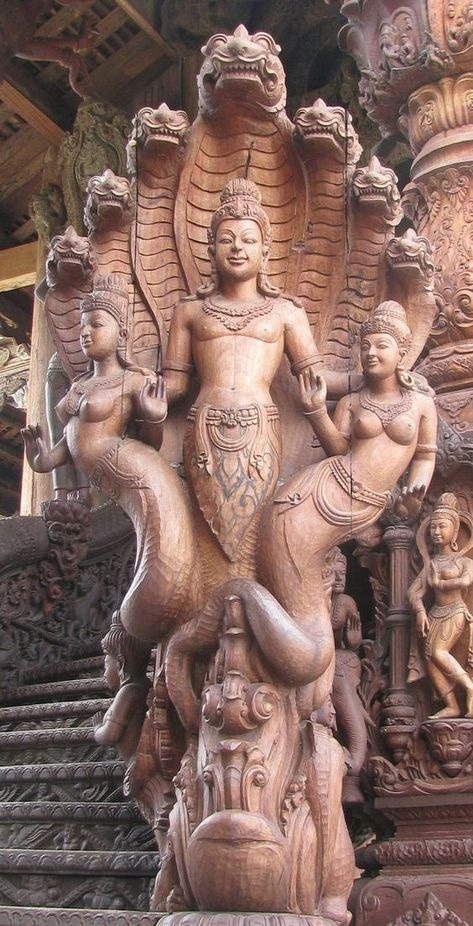
For example, the Bhagavata Purana, one of the 18 significant Puranas from a Vaishnava perspective, mentions other beings. The creation of the universe is described in detail in Canto 3, the universe in Canto 5, and battles between demigods and demons on other planets are detailed in Canto 8. The Mahabharata also extensively mentions beings on different planets. The Panchang, an ancient Indian calendar, has evolved in Indian astronomy over the past 5000 years. It predicts the exact time of lunar and solar eclipses and the dates and times of all our festivals from time immemorial. It continues to be widely followed in India. The star positions for all significant events in the Mahabharata and Ramayana, two major Indian epics, are also given.
Modern astronomers have dated these positions and found them to be internally consistent. Surprisingly, our ancient story of Dasavatharam, which mentions the ten avatars of Vishnu, also describes the evolution of life from fish to amphibians, animals, half-animal/half-human creatures, short, intelligent humanoids, forest-dwelling axe-men, ideal homo sapiens, wise politicians, and finally, Buddha. Darwin's theory mirrors this up until the homosapien. The tenth avatar, Kalki, is believed to be the technically adept human of tomorrow. Finally, a 16th-century hymn called the Hanuman Chalisa describes the distance to the Sun. It states that one yuga, an epoch, equals 4.32 million years. The Hanuman Chalisa claims that the Sun is at a distance of 100 crore yojanas from the Earth, with one yojana equating to about eight miles, which translates to 800 million miles.
Ancient references mention that the Earth and other planets orbit the Sun and that the size of our solar system is close to the same as it is now. Various texts also discuss the nature of time, reality, and consciousness. Modern science is validating these ideas one by one.
#aliens#history#science#ufology#mytholog#religions#space#news#writers on tumblr#ancient history#conspiracy theories#conspiracies#forbidden knowledge#truth reading
4 notes
·
View notes
Text
History of cambodia
The history of Cambodia is rich and complex, spanning thousands of years and marked by periods of great prosperity, cultural achievements, and political upheaval. Here is an overview of key periods and events in Cambodian history:
Ancient Civilizations: The earliest known civilization in Cambodia dates back to the Funan Kingdom in the 1st century CE. Funan was succeeded by the Chenla Kingdom in the 6th century, which eventually split into two rival states: Chenla Land to the north and Chenla Water to the south.
Angkor Empire: The Khmer Empire, centered around the city of Angkor, rose to prominence in the 9th century under King Jayavarman II. Angkor became one of the most powerful and prosperous empires in Southeast Asia, known for its impressive architecture, including the iconic Angkor Wat temple complex. The empire reached its zenith during the reign of King Jayavarman VII in the 12th century.
Thai and Vietnamese Incursions: The decline of the Khmer Empire began in the 13th century due to invasions by the Thai and Vietnamese kingdoms. Angkor was sacked by the Ayutthaya Kingdom in 1431, leading to the eventual abandonment of the city.
Colonial Rule: Cambodia became a French protectorate in 1863 after King Norodom signed a treaty with the French colonial authorities. Under French rule, Cambodia was governed as part of French Indochina along with Vietnam and Laos.
Independence and Turmoil: Cambodia gained independence from France in 1953 under King Norodom Sihanouk. However, political instability and internal conflict plagued the country in the following decades, exacerbated by the Vietnam War and the rise of the Khmer Rouge insurgency.
Khmer Rouge Regime: The Khmer Rouge, led by Pol Pot, seized power in Cambodia in 1975 after the fall of Phnom Penh. The Khmer Rouge regime implemented radical communist policies, resulting in widespread atrocities, forced labor, and the deaths of an estimated 1.7 to 2 million people during the Cambodian genocide.
Vietnamese Occupation: In 1979, Vietnam invaded Cambodia and overthrew the Khmer Rouge regime. Cambodia became a Vietnamese-backed socialist state known as the People's Republic of Kampuchea, leading to years of conflict and instability.
Peace Accords and Reconstruction: In the 1990s, Cambodia transitioned to a constitutional monarchy and began the process of national reconciliation and reconstruction. The Paris Peace Accords in 1991 laid the groundwork for democratic elections and the establishment of a multiparty system.
Modern Cambodia: Cambodia has made significant progress in the decades since the end of the civil war, experiencing economic growth, infrastructure development, and improvements in living standards. However, challenges remain, including political corruption, human rights abuses, and social inequality.
Despite its tumultuous history, Cambodia continues to be home to a rich cultural heritage, vibrant traditions, and resilient people who are working towards a brighter future for their country.
3 notes
·
View notes
Text
Animation Night 153: Kara no Kyōkai, part 1
We are entering... a slightly tricky phase of Animation Night. It’s not that we’re out of great animated films, far from it. Hell, we’ve yet to screen such classics as The End of Evangelion or Adolescence of Utena. But that’s the puzzle: a lot of such films are awkward fits for the format, requiring a lot of context, or standing too short or too long to fill the format.
Nor are we short of beautiful, artistic films from Europe. AniObsessive recently did a column on The Swallows of Kabul, which might finally be an answer the question of ‘what the hell could go beside Funan’. But I think we’ve had a bit too much war and genocide on this blog lately, so we’ll save that for another day.
Instead, let’s keep it chuuni!
It’s been a long while since Animation Night had anything to do with the Nasuverse. Back on Animation Night 60, I wrote a fairly brief description of Fate, and we enjoyed the spectacular Heaven’s Feel movies with only mild confusion.
But this was far from the only time that studio Ufotable adapted the the works of the enigmatic king of chuunibyou, Kinoko Nasu.

Let’s set the scene to begin. I’ll try and go over what I’ve been able to find out about the history, bearing in mind that Nasu-san is insanely prolific and his meta-setting is a seemingly infinite rabbit hole of lore...
...but as far as the man* himself there’s only the barest information to go on about his earlier life. He went to Hosei University, and afterwards started creating novels with his high-school buddy Takashi Takeuchi. Their first project was 空の境界 Kara no Kyōkai, lit. The Boundary of Emptiness but titled in English The Garden of Sinners in 1998 - that’s our subject for tonight, so more on that in a minute!
(*Wikipedia offers a citation for ‘man’ to a 2004 blog post where he jokes about being called a girl in a newspaper, in which he remarks もともと女々しいのがワタクシの芸風ですものボンソワー。[My style’s always been feminine, bonsoir.]; no further comment on that.)
In 2000 the pair founded a dōjin circle called TYPE-MOON to publish the visual novel 月姫 Tsukihime (lit. Moon Princess), which was a mega-hit when it launched at Comiket, and from that went on to create another visual novel called Fate/Stay Night, which was an even bigger mega-hit. This led to a forest of spinoffs with increasingly baroque titles like ‘Fate/hollow ataraxia’ or ‘Fate/kaleid liner Prisma Illya’, the most successful being the gacha game Fate/Grand Order, which launched in 2015. That gacha game has in turn spawned many many adaptations of its various storylines, such as (deep breath) Fate/Grand Order - Absolute Demonic Front: Babylonia or Fate/Grand Order: Final Singularity - Grand Temple of Time: Solomon. Really rivaling Kingdom Hearts there. Some of these films have been described as creative and ambitious, others very staid and playing it safe, but to be honest I am a foreigner in this land and I can’t tell you too much about them.
Anyway, as far as biographical details go, perhaps there’s more buried in an interview somewhere? But if so, I’ve yet to find it.

Our subject for tonight is a seven movie series produced by Ufotable from 2007-9, adapting Nasu’s first work. You might say, Bryn, that’s nuts, seven entire movies! To clarify, these movies are for the most really short, each just about an hour long with a couple of exceptions. So we should be able to pretty comfortably view the whole thing over two Animation Nights.
So what’s it about?
Set when it was written in the late 90s, it follows a teenage girl demon hunter called Shiki Ryougi, who has ‘Mystic Eyes of Death Perception’, which let her see indications of how things will die. She becomes a detective specialising in supernatural cases, alongside her eventual husband, Mikiya Kokutou. So romance and supernatural battles.
Many of these ideas, particularly the death perceiving eyes, would be reprised in Tsukihime. Within the meta-narrative, Kara no Kyōkai is an alternate universe, but not one completely disconnected from the rest, with its characters showing up for minor roles - and even playing a role in the end of Heaven’s Feel.
Except, that’s selling it short, because it’s also the first outing for the more esoteric concepts of the Nasu’s works: the Akashic Record, the Jungian anima and animus, and the paradoxes of the Taiji in Chinese philosophy to name a few. And to ground that, all sorts of dark shit: Wikipedia reels of suicide, rape, patricide, incest and murder, along with DID. It sounds like a lot!
Of course, it’s also about ridiculous psychic powers with long names, magic eyes, and so on. It’s easy to mock all these chuuni elements as hollow and pretentious, but imo the resulting blend is to strike out somewhere fascinatingly weird and achieve effects that a more reserved work couldn’t. We’ll see whether that comes together here!
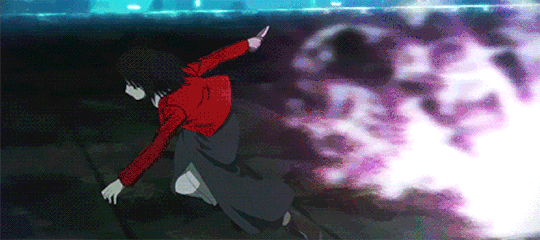
In discussing the film series, Nasu described the original work - which he came to view as a rough early work - as ‘like a prose poem’, inherently very difficult to adapt. He turned down proposals to adapt it as a TV series and a movie, imagining it would be too hard for audiences to follow. But when a seven-movie series by Ufotable was proposed, he changed his mind:
It was such an off-the-wall idea that I got caught up in the enthusiasm; the offer was so awesome that turning it down seemed rude, so I agreed readily.
So, that’s one of the two characters in our story. What of the other?
Ufotable would later make ‘adapting Fate works’ into a steady line of work alongside popular shōnen like Demon Slayer. But at this time, they were a much more experimental studio. At sakugablog, kVin writes...
[Aniplex producer Atsuhiro] Iwakami had been ruminating about how to put together an adaptation for Kara no Kyoukai that actually lived up to the potential he saw in Kinoko Nasu’s world since 2004, and by the following year, the solution to his woes manifested in front of his eyes. Futakoi Alternative was an eccentric reboot of a milquetoast, twins-themed harem series. It reimagined everything about the original series into a simply indescribable mix of genres and crazy scenarios. The motto of ufotable’s founder Hikaru Kondo resonates throughout the whole series: if making as many things as possible is the way to ensure you’ll get some of them right, why not jump around from noir cinema, to sci-fi epics, then back to face some humanoid squids before some surprisingly earnest romance? For viewers like Iwakami, this irreverent spirit was a wake-up call about new ways to create animation. So, why not approach them when he was planning something grand that wasn’t quite like anything seen before in anime?
In fact, Iwakami’s original idea was merely a trilogy; it was Ufotable founder Hikaru Kondo who was like nah man let’s do seven. Within the studio were type-moon fans such as director Takuya Nonaka and character designer Tomonori Sudo, whose passion inspired Kondo to go big. Recklessly big. The initial plan was to release a new film monthly, but this soon proved predictably impossible. Even so, they managed to complete the series within two years, which is pretty astonishing in its own right.
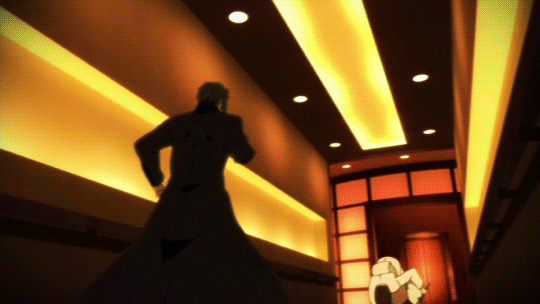
As you can see from the clips in this post, the visual style of these movies anticipates - if perhaps in a cruder form - the studio’s later Fate adaptations: chiaroscuro lighting and gradients and filters on top of gradients and filters. Not everyone’s cup of tea, but as far as a house style goes, it’s worth acknowledging.
Internally, its direction was shaped by the flatter-than-usual hierarchy of Ufotable (whose name refers to a round table in the Arthurian sense). Each movie was assigned a different director without a structure unify the production as a whole beyond adherence to Nasu’s work.
I’ll pull in kVin to describe the resulting vibe of the project:
At its core, Kara no Kyoukai is a pretty cute love story that asks itself whether it’s possible to stray away from your fate; to put it plainly, Kokutou claims that he can fix her, even if the fixing involves getting over a pesky character flaw such as a predisposition towards murder. While not a groundbreaking scenario, its commitment to that relationship in spite of all the extraneous elements makes it work, and Shiki in particular is a slaughterer with very charming body language that evolves according to the major shifts to her character.
At the same time, these films are also highly atmospheric and committed to the sensorial experience in a way that no other Type-Moon anime is. While the expository worldbuilding and dense dialogue that Nasuverse works are known for are still very much present, the Kara no Kyoukai films are also willing to stay silent for minutes at a time. The mystery aspect to these films—Shiki and Kokutou work for Aozaki Touko’s detective agency after all—is honored with an appreciation for the mystique; even if you know that long-winded answers are likely to come, they tend to relish the opportunity to soak the viewer in the grim, mysterious atmosphere of its world. There is a quiet appreciation of the things that are yet to be known, and those that may not be spelled out.

At the time, he writes, the staff were intimidated by the idea of theatrical animation, which in the 90s called to mind Patlabor and Satoshi Kon - a tough act to follow, no question. But the dense image boards of art director Nobutaka Ike, who worked on those very same films, brought the confidence needed.
The films follow the same release order as the original novels, which is narratively non-chronological.
Nasu, for his part (link again), was anxious about his early works being adapted...
In Kara no Kyoukai, the first story, "Overlooking View" (俯瞰風景) is the clumsiest. I've always thought I wanted to do something about it, and I told a staff member, "If we're making this into a movie, I'm going to rewrite the first story; please let me do that." But he said, enthusiastically, "No, I want to work with it the way it is. I want to animate this!"
Then, when I read the finished script, they'd cut out over half of the unnecessary excess fat and had turned out something more interesting as a story, so I thought, "If it's like this, they don't need me to rewrite it."
In Nasu’s view, each film ought to stand alone, but the full picture can’t really be understood from just the first - but he claims that with all seven films, the viewer would have enough to understand the story without having to turn to the books. Which is lucky, because the only version of the books in English is a widely disparaged fan translation.
To support all this comes haunting music by composer Yuki Kajiura and her group Kalafina, who would later create the renowned soundtrack to Madoka. In fact these movies are the origin of Kalafina, with Kajiura putting together a new group with a couple of members of her previous project FictionJunction.
Anyway, please read the rest of kVin’s article (perhaps after the movies! x3) if you fancy a detailed retrospective on all seven films.
Tonight my plan is to screen the first four parts of The Garden of Sinners, namely...
I: Overlooking View - an introduction to the series. In 1998, Shiki lives alone in her apartment, occasionally visited by Mikiya, and working for an occult detective agency. She learns of a series of strange suicides at an abandoned building. Investigating, she finds the building is full of hostile ghosts. Someone is drawing the girls to the building by astral projection...
II: A Study in Murder - Part 1 - in 1995, Shiki and Mikiya are highschool students. A spree of brutal murders break out in the area. Mikiya discovers that Shiki (式) is plural, with a male alter called SHIKI (織) who is the inverse of her personality. But who’s doing the murders?
III: Remaining Sense of Pain - A teenage girl called Fujino is raped by a group of gangsters, and pursues revenge with her psychic powers. Shiki and Mikiya are pulled in to the case, and realise that Shiki once knew Fujino - a girl who could not feel pain. But that seems to have changed...
IV: Hollow Shrine - a direct sequel to the second film. Shiki ended up comatose, and now in the psychic void, confronts her alter. We learn about her backstory and how she got involved with the wizard detectives.
I think these summaries should convey the level of Content(TM) we’re dealing with here. Guards up!
Next time around, we’ll pick up with Paradox Spiral, Oblivion Recording, and then at last A Study in Murder - Part 2. Which will actually be longer, because PS and ASiM2 are two hours long. (There’s also an eighth movie, released in 2013, titled Future Gospel which is a new sequel written by Nasu for movie form.)
I think that will suffice for an introduction. Animation Night will be going live 7:30 UK time, about 40 minutes from this post, and at 8pm UK time we shall begin the movies! Join me at https://www.twitch.tv/canmom~
7 notes
·
View notes
Text

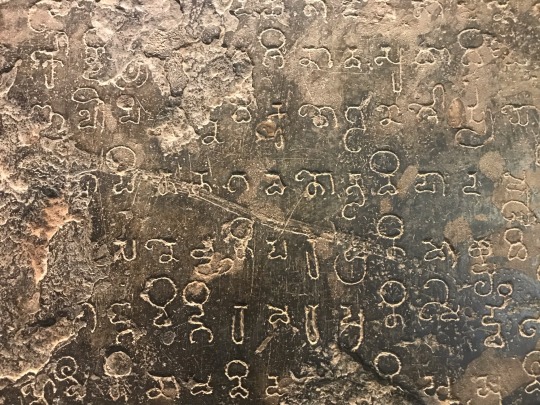


Stelae from the kingdom of Funan (present day Cambodia/Thailand/Vietnam), written in Sanskrit & old Khmer. 632 AD
2 notes
·
View notes
Text
Discover Cambodia: A Comprehensive Travel Guide
Cambodia, a gem in Southeast Asia, is a land of ancient temples, vibrant culture, and resilient spirit. From the awe-inspiring Angkor Wat to bustling markets in Phnom Penh, Cambodia offers a rich tapestry of experiences for every traveler. Brief History Cambodia’s history dates back to the early kingdoms of Funan and Chenla, which later gave rise to the Khmer Empire in the 9th century. The…
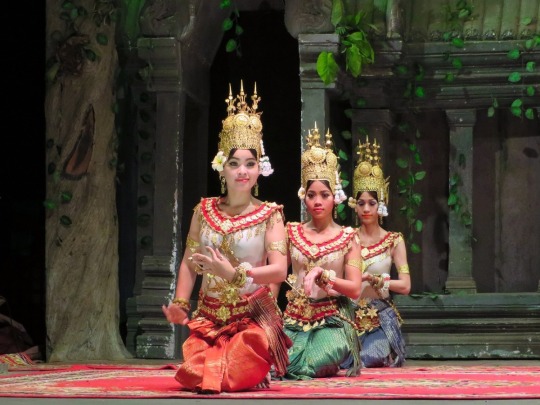
View On WordPress
#15th century#19th century#9th century#access to quality education remains uneven#Activities for tourists in cambodia#adventure#africa#and animists.#and daily life of Cambodians. There are also small communities of Muslims#and larger stores#and urban planning of cities like Phnom Penh and Battambang. The colonial period brought modernization but also economic exploitation and cu#Angkor Wat#bag snatching in cambodia#Battambang#Beaches and Islands#Budget hostels in cambodia#but the US Dollar is widely accepted. ATMs are plentiful in urban areas#Cambodia#Cambodia Visa requirements#Cambodia was part of French Indochina from 1863 until 1953. The French influence is still visible in the architecture#Cambodian Riel (KHR#Can I use US dollars in Cambodia?#Cheap accomodation in Cambodia#Christians#Cost of living in Cambodia#credit cards#crowded places in Cambodia#cuisine#Cultural Performances#destinations
0 notes
Text
SOMA // QUEEN OF FUNAN
“She was the ruler of the Kingdom of Funan and widely claimed as the first monarch of Cambodia. She was also the first female leader of Cambodia. She was the consort of Kaundinya I. As per the legends, an Indian merchant ship was attacked by the pirates led by Soma, daughter of the chieftain of the local Naga clan. The merchants led by Kaundinya fought back and fended off the attackers but the ship was damaged and was beached for repairs. The Indians were weary of a second attack but Soma was impressed by Kaundinya’s bravery and proposed marriage which was accepted. The union led to the foundation of the House that became the royal dynasty of Funan which would rule for many generations.”

0 notes
Photo
Culture of Cambodia
Throughout Cambodia's long history, religion has been a major source of cultural inspiration. Over nearly two millennia, Cambodians have developed a unique Cambodian culture and belief system from the syncreticism of indigenous animistic beliefs and the Indian religions of Buddhism and Hinduism. Cambodia's unparalleled achievements in art, architectures, music, and dance from the 9th and 14th century have had a great influence on many neighboring kingdoms, namely Thailand and Laos. The effect of Khmer culture can still be seen today in those countries, as they share many close characteristics with current-day Cambodia

Throughout Cambodia's long history, religion has been a major source of cultural inspiration. Over nearly two millennia, Cambodians have developed a unique Khmer culture and belief system from the syncretism of indigenous animistic beliefs and the Indian religions of Buddhism and Hinduism. Indian culture and civilization, including its languages and arts reached mainland Southeast Asia around the 1st century A.D. It is generally believed that seafaring merchants brought Indian customs and culture to ports along the Gulf of Thailand and the Pacific en route to trade with China. The Kingdom of Funan was most probably the first Khmer state to benefit from this influx of Indian ideas. There is also French influence.
History

Apsara dancer in front of Angkor Wat, two Cambodian cultural symbols.

Khmer painting
The Golden Age of Cambodia was between the 9th and 14th century (the Angkor period), during which it was a powerful and prosperous empire that flourished and dominated almost all of inland Southeast Asia. However, Angkor would eventually collapse after much in-fighting between royalty and constant warring with its increasingly powerful neighbors, notably Siam and Dai Viet. Many temples from this period however, like Bayon and Angkor Wat still remain today, scattered throughout Thailand, Cambodia, Laos, and Vietnam as a reminder of the grandeur of Khmer arts and culture. Cambodia's unparalleled achievements in art, architectures, music, and dance during this period have had a great influence on many neighboring kingdoms, namely Thailand and Laos. The effect of Angkorian culture can still be seen today in those countries, as they share many close characteristics with current-day Cambodia.
Religion

Despite the Khmer Rouge disrobing and killing monks and religious scholars during its reign of terror, the country remains about 95 percent Buddhist, a testament to the faith of the people, as well as their desire for peace.

A Buddhist celebration at a Buddhist temple.
Cambodia is predominantly Buddhist with 80% of the population being Theravada Buddhist, 1% Christian and the majority of the remaining population follow Islam, atheism, or animism.
Buddhist nun at Angkor Wat, Siem Reap, Cambodia. Buddhism have existed in Cambodia since the 5th century C.E. Theravada Buddhism has been the Cambodian state religion since the 13th century CE (excepting the Khmer Rouge period), and is currently estimated to be the faith of 90% of the population.
Courtship, marriage, and divorce

Khmer couple in wedding attires
In Cambodia, premarital sex is deplored. The choice of a spouse is a complex one for the young male, and it may involve not only his parents and his friends, as well as those of the young woman, but also a matchmaker and a haora (a Khmer "fortuneteller" versed in Indian astrology). In theory, a girl may veto the spouse her parents have chosen for her. Courtship patterns differ between rural and urban Khmer; marriage as a culmination of romantic love is a notion that exists to a much greater extent in larger cities....
Customs

Sampeah (Cambodian greeting)
In Khmer culture a person's head is believed to contain the person's soul—therefore making it taboo to touch or point one's feet at it. It is also considered to be extremely disrespectful to use the feet to point out a person, or to sit or sleep with the soles of the feet pointing at a person, as the feet are the lowest part of the body and are considered to be impure...
Clothing

Khmer couple in traditional clothing

Cambodia – Traditional Dress
Clothing in Cambodia is one of the most important aspects of the culture. Cambodian fashion differs according to ethnic group and social class. Khmer people traditionally wear a checkered scarf called a Krama. The "krama" is what distinctly separates the Khmer (Cambodians) from their neighbors the Thai, the Vietnamese, and the Laotians. The scarf is used for many purposes including for style, protection from the sun, an aid (for the feet) when climbing trees, a hammock for infants, a towel, or as a "sarong". A "krama" can also be easily shaped into a small child's doll for play. Under the Khmer Rouge, krama of various patterns were part of standard clothing.....
Arts and literature

Traditional Khmer music performance

Khmer folk dance

Ancient Cambodian culture is filled with a long tradition of literature, oral storytelling, narrative singing, royal chronicles, and epic poetry thanks to the Sanskrit language, while classical dance and music were cultivated at court. Today, local traditions are kept alive by musicians, singers, and theatre artists, while you will find musicians in every village sharing their gift of song.

Khmer royal ballet
The history of visual arts in Cambodia stretches back centuries to ancient crafts; Khmer art reached its peak during the Angkor period. Traditional Cambodian arts and crafts include textiles, non-textile weaving such as Cambodian mats, silversmithing, stone carving, lacquerware, ceramics, wat murals, and kite-making. Beginning in the mid-20th century, a tradition of modern art began in Cambodia, though in the later 20th century both traditional and modern arts declined for several reasons, including the killing of artists by the Khmer Rouge. The country has experienced a recent artistic revival due to increased support from governments, NGOs, and foreign tourists....;

Today, the most important artistic undertaking in Cambodia is the restoration of murals in Buddhist temples, as well as the artisanship of nearly forgotten crafts such as stone carving, silversmithing, pottery, and krama silk weaving, which you as a guest of Aqua Mekong will be privy to.
Literature

The tale of Vorvong & Sorvong illustration, a Khmer 19th century drawing.
A testimony of the antiquity of the Khmer language are the multitude of epigraphic inscriptions on stone. The first written proof that has allowed the history of the Khmer Kingdom to be reconstructed are those inscriptions. These writings on columns, stelae and walls throw light on the royal lineages, religious edicts, territorial conquests and internal organization of the kingdom...

Take a journey of a lifetime aboard the award-winning Aqua Mekong river ship for a truly immersive, meaningful, and personalized luxury experience in this culture-rich landscape. Itineraries depart from Ho Chi Minh City, Phnom Penh, and Siem Reap. Aqua Expeditions is the only Mekong cruise that combines an exploration of the Mekong River, dotted with guided visits to temples, traditional artisans, and local markets, with a trip to Siem Reap and Angkor Wat by providing complimentary flight extensions to Siem Reap during the low water season.
Culture of Cambodia - Wikipedia
Cambodia - Wikipedia

Dozens of pieces of very old gold jewelry believed to have once been worn by Angkor royalty, like this diadem, have been returned to Cambodia.Credit…Cambodia Ministry of Culture & Fine Arts
140 notes
·
View notes
Text
Hindu Kingdoms in South East Asia
Funan(2000 yrs ago)- Southern vietnam and southern Cambodia.
Kaundinya I from Kalinga married the local princess Queen Soma and gave rise to Funan kingdom.
Chenla and champa were its successor states (both hindu).
Champa kingdom was in existence from 192 AD to 1832 AD. The south china sea was historically called the Champa Sagar.
Java -Shailendra dynasty(still rules Srivijaya in Sumatra).
Majapahid empire was the imperial phase of Indonesia which is still considered the pinnacle of Indonesian history.
1 note
·
View note
Text
Vietnam-South Korea Joint Effort in Óc Eo Site Excavation
via Vietnam News, 06 December 2023: A collaborative excavation project between Vietnamese and South Korean archaeologists at the Gò Danh Sang relic site in An Giang, part of the Óc Eo-Ba Thê archaeological site, aims to uncover more about the Óc Eo culture. This initiative is part of a broader research effort to understand the role of inhabitants in ancient maritime trade routes. The site, which…

View On WordPress
0 notes
Text
From ancient Funan to the Siamese kingdom of the current Chakri dynasty, Thailand has had its huge share of diverse monies—a wide variety of oddities in the field of ethnographic numismatics.
At the Bangkok Coin Museum, an institution run by the Treasury Department, curious visitors can learn the fascinating history of Thai currencies. Despite its proximity to the National Museum and the Sanam Luang Park, it's a lesser-known and under-appreciated tourist attraction, making it a neat oasis from the tropical heat and sightseeing crowds outside.
At first glance, the museum seems quite small with only a single exhibit room on the first floor. There are educational panels on the general history of money, from the invention of coinage in ancient Lydia to the development of modern Thai baht. But join the regular guided tour and you'll be led into hidden chambers full of numismatic curiosities.
The tour starts in the "Beginning of Currency" room, a multimedia exhibit emulating a prehistoric cave. Played on its projection screens is a 4D-animated movie on the concept of money, from barter to the discovery of precious metals, which led to the dawn of coinage.
It is followed by a section exhibiting a variety of "primitive money," including the cross-shaped copper ingots of 19th-century Katanga, the rai stones of Yap Island, and the tin animal money of Malacca, to illustrate the diversity of the concept.
On the second floor, room after room of exhibits focuses on the history of Thai currencies, starting with the ancient kingdoms of Southeast Asia such as Funan and Srivijaya. In the late medieval Thai kingdom of Sukhothai, pod duang or "bullet money" came into common use. This was a kind of silver ingot in the form of a bar bent into a roundish shape, stamped with royal seals, and continued to be issued by the kings of Siam until modern machine-struck coinage took over in 1904.
Another oddity is the Chiang Mai tok, which was used in the Lanna kingdom in the 17th and 18th centuries. An oyster-shaped ingot of debased silver, it is often found with a blackened top with a yellowish-brown underside (or vice versa), giving it an unusual appearance. Bizarre legend has it that it was caused by the chemical reaction of the alloy mixing with egg yolk or chicken blood during the casting process.
There are also Lao silver ingots nicknamed by coin collectors as the "tiger tongue," flat coins with wrinkly flower-shaped patterns called pak chee, and porcelain gambling tokens of various shapes, from Chinese cash imitations to hexagons to cuttlefish.
The museum also showcases diverse usage of coins in folk beliefs, circulating coins from 174 countries across the world, minting processes (with a strong emphasis on coin rims), and an artistic representation of monetary evolution hung in one place like a meteoric shower, from cowries to E-banking systems all through the historical development of coins.
From ancient Funan to the Siamese kingdom of the current Chakri dynasty, Thailand has had its huge share of diverse monies—a wide variety of oddities in the field of ethnographic numismatics.At the Bangkok Coin Museum, an institution run by the Treasury Department, curious visitors can learn the fascinating history of Thai currencies. Despite its proximity to the National Museum and the Sanam Luang Park, it's a lesser-known and under-appreciated tourist attraction, making it a neat oasis from the tropical heat and sightseeing crowds outside.At first glance, the museum seems quite small with only a single exhibit room on the first floor. There are educational panels on the general history of money, from the invention of coinage in ancient Lydia to the development of modern Thai baht. But join the regular guided tour and you'll be led into hidden chambers full of numismatic curiosities.The tour starts in the "Beginning of Currency" room, a multimedia exhibit emulating a prehistoric cave. Played on its projection screens is a 4D-animated movie on the concept of money, from barter to the discovery of precious metals, which led to the dawn of coinage.It is followed by a section exhibiting a variety of "primitive money," including the cross-shaped copper ingots of 19th-century Katanga, the rai stones of Yap Island, and the tin animal money of Malacca, to illustrate the diversity of the concept.On the second floor, room after room of exhibits focuses on the history of Thai currencies, starting with the ancient kingdoms of Southeast Asia such as Funan and Srivijaya. In the late medieval Thai kingdom of Sukhothai, pod duang or "bullet money" came into common use. This was a kind of silver ingot in the form of a bar bent into a roundish shape, stamped with royal seals, and continued to be issued by the kings of Siam until modern machine-struck coinage took over in 1904.Another oddity is the Chiang Mai tok, which was used in the Lanna kingdom in the 17th and 18th centuries. An oyster-shaped ingot of debased silver, it is often found with a blackened top with a yellowish-brown underside (or vice versa), giving it an unusual appearance. Bizarre legend has it that it was caused by the chemical reaction of the alloy mixing with egg yolk or chicken blood during the casting process.There are also Lao silver ingots nicknamed by coin collectors as the "tiger tongue," flat coins with wrinkly flower-shaped patterns called pak chee, and porcelain gambling tokens of various shapes, from Chinese cash imitations to hexagons to cuttlefish.The museum also showcases diverse usage of coins in folk beliefs, circulating coins from 174 countries across the world, minting processes (with a strong emphasis on coin rims), and an artistic representation of monetary evolution hung in one place like a meteoric shower, from cowries to E-banking systems all through the historical development of coins.
9 notes
·
View notes
Text
Sampot
Traditional dress in Cambodia
A sampot, a long, rectangular cloth worn around the lower body, is a traditional dress in Cambodia. It can be draped and folded in several different ways. The traditional dress is similar to the dhoti of Southern Asia.

A traditional Khmer dancer wearing a Sampot Charabap.
The Sampot dates back to the Funan era when a Cambodian king ordered the people of his kingdom to wear the Sampot at the request of Chinese envoys. It is similar to the lungi and dhoti worn in the Indian subcontinent, the longyi worn in Burma, and the sarong worn in maritime Southeast Asia. Silk weaving was an important part of Cambodia's cultural past. People from Takéo Province have woven silk since the Funan era and records, bas-reliefs, and Zhou Daguan's report have shown that looms were used to weave sompots since ancient times.
Sampot - Wikipedia
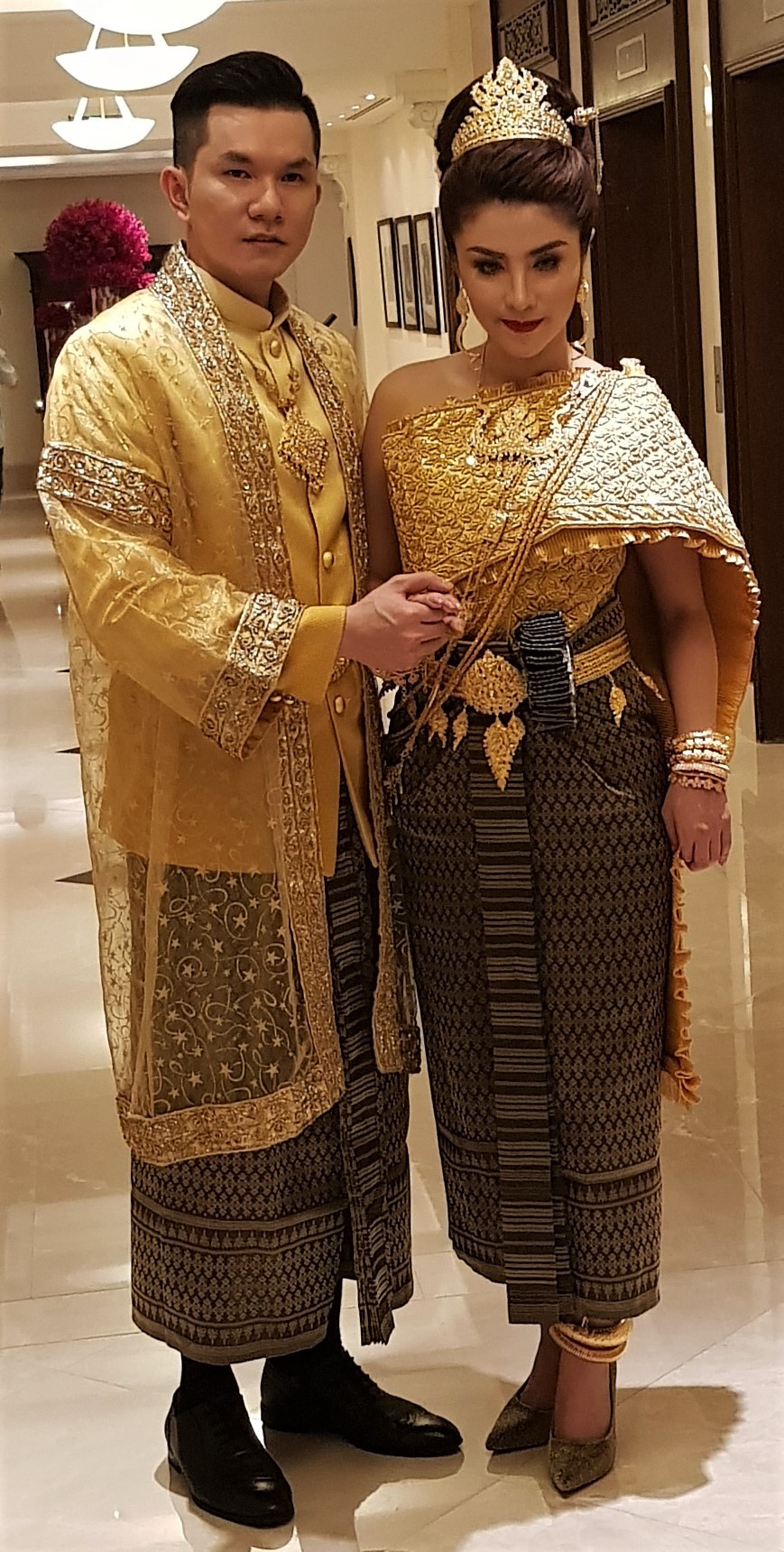
Cambodian couple in traditional dress
78 notes
·
View notes
Text
Cambodia
General Information Cambodia is a country in South East Asia. The dominating ethnic group (97%) are the Khmer, who mostly follow Theravada Buddhism. The capital is Phnom Penh. The predecessors of Cambodia such as the Kingdom of Funan and the Khmer Empire were powerful trade centers acting between India, China and other civilizations of the region. Following the decline of the Khmer Empire in the 15th century, Cambodia has been through a lot of turmoil with power struggles involving Siam and Vietnam, the rise of French colonialism in the 19th century, and a 20th century marked by wars and the devastation of the Khmer Rouge regime in the late 70s.

Angkor Wat Angkor Wat, which is also pictured on the Cambodian flag, is one of the most famous and remarkable World Heritage sites. It’s a symbol of the power of the Khmer empire at its peak, built in the 12th century by King Suryavarman II, the largest religious structure in the world with over 1000 buildings across 160 hectares. There is a lot of Hindu symbolism in this temple complex dedicated to Shiva, Brahma, and Vishnu, though a lot of art was also replaced with Buddhist motives due to the conversion of the Khmer royalty to Buddhism shortly after. In the early 15th century with the decline of the Khmer Empire, Angkor was abandoned, but its temple complex has always stayed a sacred place for Buddhists and never failed to attract the interest of any foreign visitors that came by the area.

~ Anastasia
Constitutional Framework Cambodia is a constitutional monarchy, with the King serves as the head of state and the prime minister as the head of government. The current constitution of Cambodia was established because of the 1991 Paris Peace Agreements. The constitution proclaims a liberal and multiparty democracy where powers are devolved in the executive, judiciary, and legislative.

Local Government In Cambodia, the highest level of local government consists of provinces and municipalities. Governors govern the provinces, and mayors govern the municipalities. But these two are divided into more categories; for example, municipalities are subdivided into sectors and wards. In each level of local government, the People's Committee is responsible for public administration and security. ~ Safira

Economy The Cambodian economy is driven by garment exports and tourism. For the last 20 years it was one of the quickest growing economies in the world. Textile goods account for around 70 percent of total exports with 39 percent of total employment.Cambodia's main export partners are the United States, Hong Kong, Singapore, Canada, Germany and the UK.The biggest struggle of Cambodia is not strongly correlated change in number of people under poverty line compared to quick economy growth.

Khmer Rouge I’m pretty sure you wouldn’t like to meet them. The Khmer Rouge is the name that was popularly given to members of the Communist Party of Kampuchea (CPK) and by extension to the regime through which the CPK ruled Cambodia between 1975 and 1979. Khmer Rouge wanted to turn the country into an agrarian socialist republic, founded on the policies of ultra-Maoism and influenced by the Cultural Revolution.To fulfill its goals, the Khmer Rouge emptied the cities and forced Cambodians to relocate to labor camps in the countryside, where mass executions, forced labor, physical abuse, malnutrition, and disease were rampant.

~ Damian
Sources: https://www.britannica.com/place/Cambodia https://www.britannica.com/topic/Angkor-Wat https://www.worldbank.org/en/country/cambodia/overview https://www.habitatforhumanity.org.uk/country/cambodia/ https://en.wikipedia.org/wiki/Cambodian_genocide
16 notes
·
View notes